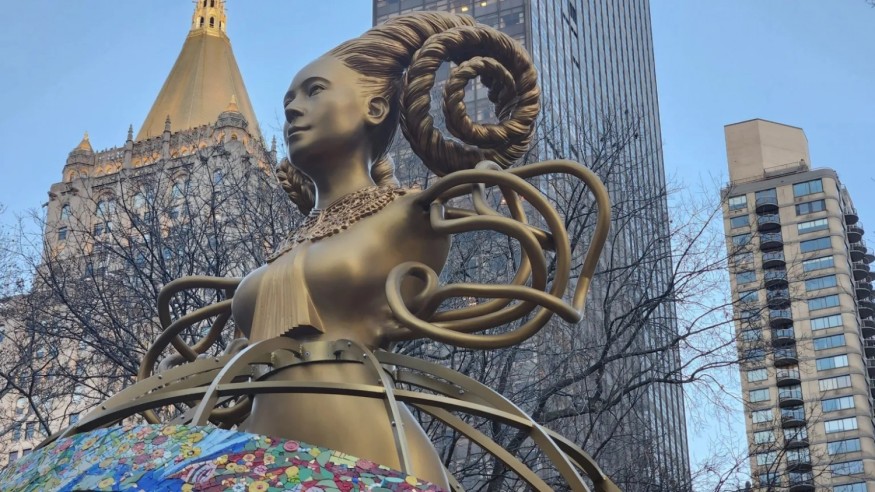Shahzia Sikander's Sculpture Vandalized at University of Houston During Political Protests

A statue by Shahzia Sikander at the University of Houston has been vandalized through beheading, adding fuel to a contentious debate that began with protests from right-wing groups. The 18-foot-tall bronze sculpture, intended as a tribute to women and justice, was beheaded during the early morning hours of July 8, coinciding with Hurricane Beryl's impact on Houston, which brought severe weather and power outages to the campus.
Investigation and Campus Reaction
A local police force that patrols campuses got a copy of a video of the incident, and the New York Times indicated that the act was orchestrated. Kevin Quinn, the University of Houston's executive director of media relations, said he was disappointed, adding that the act was reported to the University of Houston Police Department.
It depicts a woman with braided horns around her head and a chocker closely resembling the one worn by the now-later American Supreme Court Justice Ruth Bader Ginsburg. First shown to great success in New York City at Madison Square Park, the installation prompted protests as soon as it arrived in Houston.
NEW: Under the cover of a hurricane, a vandal beheaded Shahzia Sikander's monument to women & justice. Anti-abortion activists previously targeted the statue.
— Zachary Small (@ZacharyHSmall) July 9, 2024
“I don’t want to ‘repair’ or conceal,” the artist said. “I want to ‘expose,’ leave it damaged"https://t.co/SkxILQPMqp
Protests and Response
Criticism from groups like Texas Right to Life labeled the sculpture a "Satanic abortion idol," prompting campus-wide protests and the cancellation of planned events by the university, including an artist talk and a video work by Sikander herself.
Sikander clarified that the horns symbolize strength and wisdom in various cultures, refuting any allegations of Satanism in her artistic statement. In a profile of Sikander, Eleanor Heartney highlighted that the calls for removal inadvertently emphasized the sculpture's message of female empowerment.
Condemnation and Future Plans
Sikander condemned the vandalism as a "violent act of hate" and emphasized the need for a thorough investigation into the crime. However, she hesitated to restore them and offered to leave the sculpture broken for everyone to see and remind the tragedy as well as produce other masterpieces based on the event.
Promising and dedicated artist acclaimed for her artistic accomplishments and the MacArthur "genius" grant winner, Shahzia Sikander, is still presenting her pieces at different international exhibitions; even a major exhibition is being timed to coincide with the upcoming Venice Biennale.
From Quinn's article, it is understood that conservators have been approached for opinions on the extent of repairs needed on the sculpture, and dialogue with Sikander continues regarding the repair of the artwork "as soon as possible."
This incident has again opened up the debate on freedom of speech, vandalism, and political intervention with artistic works. The vandalizing of Shahzia Sikander's sculpture at the University of Houston is an instance of artists invariably continuing to grapple with contentious social postmodern issues. It underlines potential threats to artistic freedom and public spheres where people can share their opinions and creativity. It has led to appeals to stick together in the creative world and other spheres to search for conditions that allow people to try their creativity without encountering threats of being stained or threatened. Thus, it leads to further reflection on how principles of equality and respect can be maintained when people face societal and political challenges today.













